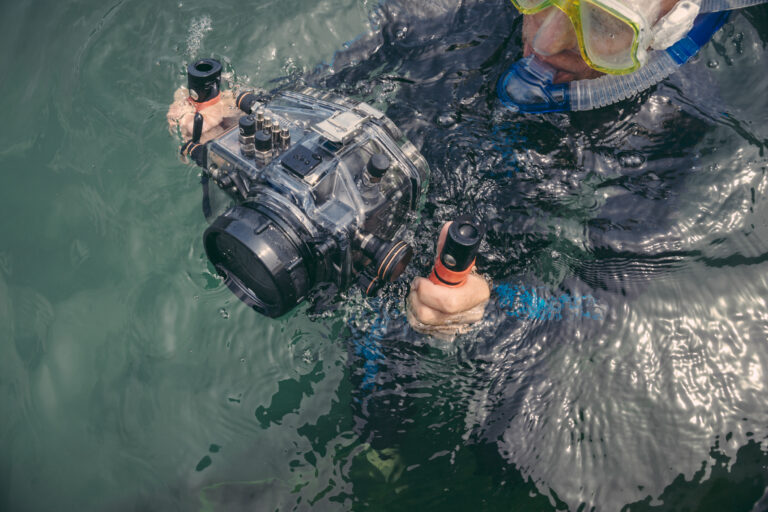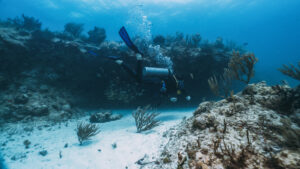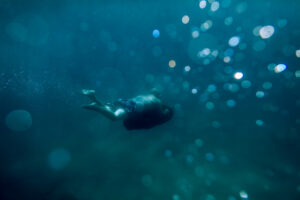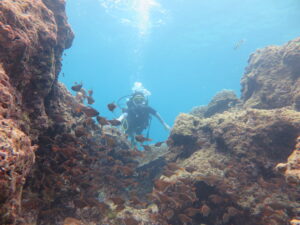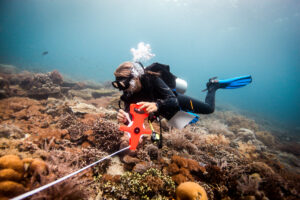What is Activated Charcoal used for in Scuba Equipment?
Activated charcoal, also known as activated carbon, is a form of carbon processed to have small, low-volume pores that increase the surface area available for adsorption or chemical reactions. Renowned primarily for its ability to absorb toxins and chemicals, activated charcoal is used in a variety of applications ranging from medical treatments to water purification. In the context of scuba diving, this substance plays a crucial role, particularly in the purification of breathing air within scuba equipment, ensuring that divers inhale clean, uncontaminated air while exploring underwater environments.
Historical Development
The use of activated charcoal dates back to ancient times, with records indicating its use by the Egyptians for purification and medicinal purposes. Modern activated charcoal has its roots in the 19th century when its adsorptive properties were first applied industrially in sugar refining. Over time, its application expanded to include a wide range of purification and filtration tasks, becoming a staple in water treatment facilities, air purifiers, and medical devices. Its introduction into scuba diving equipment marked a significant advancement in diver safety, enhancing the ability to remove impurities from the compressed air used in diving tanks.
Properties of Activated Charcoal
Activated charcoal is characterized by its high degree of micro-porosity, which is derived from the carbonization of organic materials such as wood, coconut shells, and coal. The activation process, often involving high temperatures and an activating agent like steam or chemicals, strips the carbon material of previously absorbed molecules and frees up bonding sites. This process significantly increases its surface area; for instance, just one gram of activated charcoal can possess a surface area exceeding 500 m², ideal for adsorbing large quantities of gases and contaminants.
The adsorptive power of activated charcoal lies in its ability to attract and hold organic chemicals inside its pore structure. Unlike absorption, where materials are taken up into the volume of the absorbent, adsorption involves the adhesion of atoms, ions, or molecules from a gas, liquid, or dissolved solid to a surface. This characteristic makes activated charcoal particularly valuable in scuba diving, where it is essential to eliminate potential toxins such as carbon monoxide and other contaminants from breathing air.
Role in Scuba Diving
In scuba diving, the quality of breathing air is paramount, as divers rely solely on the air carried in their tanks to breathe underwater. Activated charcoal filters are employed in the systems that prepare and maintain this air, specifically designed to adhere and remove various contaminants that could pose health risks or diminish the quality of the dive. These systems are critical not only in the initial filling of scuba tanks but also in maintaining the purity of the air during storage and handling.
Activated Charcoal in Diving Air Filtration Systems
Scuba tanks require air that is not only free from particulate matter and water vapor but also from chemical impurities that could affect both the health of the diver and the integrity of the diving equipment. Activated charcoal filters are a key component of the air filtration systems used during the compression and storage of scuba tank air. These filters function by trapping organic compounds and even some inorganic gases through a process known as chemisorption, where a chemical reaction occurs between the surface of the charcoal and the gases passing over it.
The effectiveness of activated charcoal in these systems comes from its ability to adsorb a wide range of organic molecules, particularly volatile organic compounds (VOCs) and other gases produced by the compression process itself or that may be present in the environment where tanks are filled. This includes potential contaminants like benzene, radon, methane, as well as residual smells and flavors that could make the breathing experience unpleasant or unsafe.
Benefits of Activated Charcoal in Scuba Diving
The primary benefit of using activated charcoal in scuba diving is the assurance it provides in the safety and quality of breathing air. This contributes significantly to diver safety, protecting them from potential poisoning or health complications associated with contaminated air. Additionally, activated charcoal extends the lifespan of scuba equipment by preventing the accumulation of harmful substances within the tank and regulator systems, which can corrode and damage sensitive components.
Moreover, by ensuring that only the cleanest air is stored within diving cylinders, activated charcoal systems help in maintaining the optimal performance of diving gear, enhancing the overall diving experience by providing odor-free and taste-neutral air. This level of filtration is particularly crucial for divers operating in environments where air quality cannot be guaranteed, such as in industrial areas or locations near natural sources of volatile organic compounds.
Challenges and Limitations
Despite its extensive benefits, the use of activated charcoal in scuba diving is not without its challenges. One of the primary limitations of activated charcoal is its finite adsorption capacity. Over time, the pores in the charcoal become filled with adsorbed materials, which diminishes its effectiveness and requires replacement of the filter media. This saturation can occur more quickly if the air being filtered contains high levels of contaminants, necessitating more frequent checks and replacements to maintain air quality.
Another challenge involves the management of filters, especially in remote diving locations where resources and technical support may be limited. Proper maintenance is crucial because a failure in the air purification system can lead to dangerous levels of contaminants in the breathing air, posing serious risks to divers’ health. Additionally, the physical properties of activated charcoal can be affected by moisture. When wet, the effectiveness of activated charcoal significantly decreases, which can be problematic in humid or marine environments typical of scuba diving.
Furthermore, while activated charcoal is excellent at removing many organic compounds, it is less effective against some inorganic gases such as carbon monoxide unless specifically treated or modified to enhance its adsorptive capabilities. This limitation necessitates the use of additional filtering technologies in conjunction with activated charcoal to ensure all forms of contaminants are adequately removed from scuba tank air.
Recent Advances and Innovations
Research and development in the field of activated charcoal have led to several advances that continue to enhance its applicability in scuba diving. One of the most significant innovations is the development of impregnated or chemically enhanced activated charcoal. This type of charcoal is treated with additional chemicals that improve its ability to adsorb specific types of gases, such as carbon monoxide and other potentially lethal contaminants that could not be effectively removed by traditional activated charcoal.
Moreover, advances in the manufacturing processes have made it possible to produce activated charcoals with even greater surface areas and more controlled pore structures. These improvements enhance the efficiency and lifespan of charcoal filters, allowing for longer periods between replacements and better performance under a wider range of conditions. Additionally, newer models of portable filtration systems equipped with these advanced charcoals have become increasingly compact and efficient, making them ideal for use in field conditions by divers.
Environmental and Health Considerations
The production and use of activated charcoal also have environmental and health implications that must be considered. The carbonization and activation processes typically require high temperatures and may involve the release of greenhouse gases unless managed properly. The source materials for charcoal, such as wood or coconut shells, must be harvested sustainably to prevent deforestation and biodiversity loss.
From a health perspective, while activated charcoal significantly improves air quality for divers, the disposal of used charcoal must be handled carefully to prevent the release of adsorbed toxins back into the environment. Regulations concerning the handling and disposal of spent activated charcoal are stringent in many countries, requiring proper treatment before disposal to ensure that contaminants are not reintroduced into the environment.
Regulatory and Safety Standards
The use of activated charcoal in scuba diving is subject to various regulatory and safety standards, which vary by region but generally aim to ensure the highest levels of air purity and safety for divers. These standards often specify the types of charcoal that can be used, the necessary replacement intervals, and the testing procedures for filtration systems. Compliance with these standards is crucial not only for maintaining diver safety but also for ensuring the reliability and performance of diving equipment.
Key Takeaways
Activated charcoal plays an indispensable role in the safety and effectiveness of scuba diving by ensuring that the air divers breathe is free from harmful contaminants. Its ability to adsorb a wide array of organic compounds has made it a staple in diving air purification systems. While there are challenges associated with its use, ongoing research and technological advancements continue to enhance its efficiency and applicability. As diving continues to evolve and expand into more extreme environments, the role of activated charcoal in providing clean and safe breathing air remains crucial. Future developments are likely to focus on improving the capacity and specificity of activated charcoal, reducing its environmental impact, and enhancing the overall sustainability of its use in diving operations.

